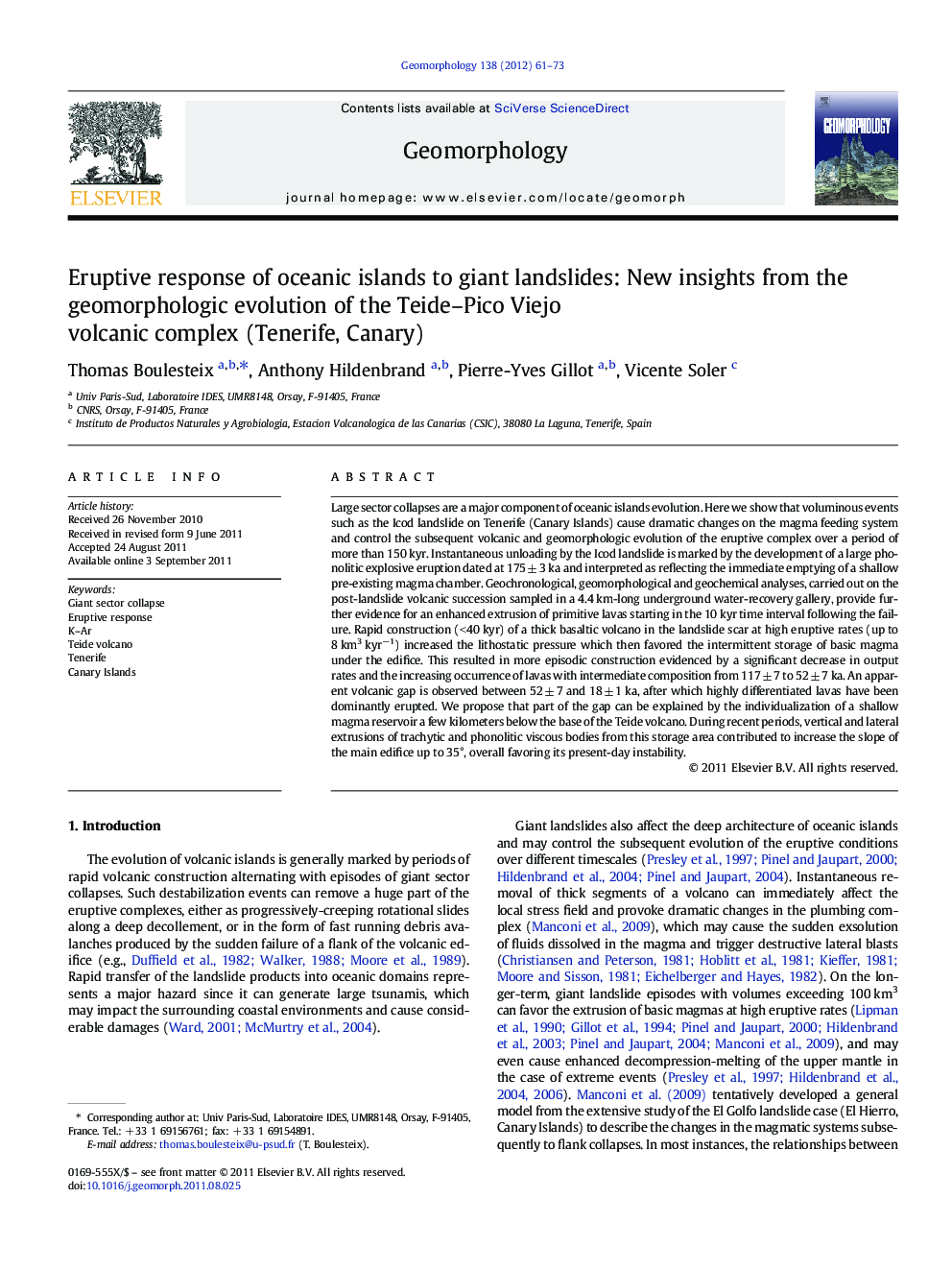| کد مقاله | کد نشریه | سال انتشار | مقاله انگلیسی | نسخه تمام متن |
|---|---|---|---|---|
| 4685347 | 1349485 | 2012 | 13 صفحه PDF | دانلود رایگان |

Large sector collapses are a major component of oceanic islands evolution. Here we show that voluminous events such as the Icod landslide on Tenerife (Canary Islands) cause dramatic changes on the magma feeding system and control the subsequent volcanic and geomorphologic evolution of the eruptive complex over a period of more than 150 kyr. Instantaneous unloading by the Icod landslide is marked by the development of a large phonolitic explosive eruption dated at 175 ± 3 ka and interpreted as reflecting the immediate emptying of a shallow pre-existing magma chamber. Geochronological, geomorphological and geochemical analyses, carried out on the post-landslide volcanic succession sampled in a 4.4 km-long underground water-recovery gallery, provide further evidence for an enhanced extrusion of primitive lavas starting in the 10 kyr time interval following the failure. Rapid construction (< 40 kyr) of a thick basaltic volcano in the landslide scar at high eruptive rates (up to 8 km3 kyr−1) increased the lithostatic pressure which then favored the intermittent storage of basic magma under the edifice. This resulted in more episodic construction evidenced by a significant decrease in output rates and the increasing occurrence of lavas with intermediate composition from 117 ± 7 to 52 ± 7 ka. An apparent volcanic gap is observed between 52 ± 7 and 18 ± 1 ka, after which highly differentiated lavas have been dominantly erupted. We propose that part of the gap can be explained by the individualization of a shallow magma reservoir a few kilometers below the base of the Teide volcano. During recent periods, vertical and lateral extrusions of trachytic and phonolitic viscous bodies from this storage area contributed to increase the slope of the main edifice up to 35°, overall favoring its present-day instability.
► We depict the eruptive response of Tenerife Island to the giant Icod flank collapse.
► 4D geometry of Teide volcanic complex is reconstructed from horizontal underground galleries.
► The 185 km3 Icod flank collapse is newly dated between 175±3 ka and 161±5 ka.
► A 1700 m-thick basaltic volcano was then built in the landslide scar in less than 50 kyr.
► Loading of the feeding system induced magma differentiation and slopes increase.
Journal: Geomorphology - Volume 138, Issue 1, February 2012, Pages 61–73